Thomas Nast (1840 – 1902)
Get a Nast Certificate of Authenticity for your painting (COA) for your Nast drawing.
For all your Nast artworks you need a Certificate of Authenticity (COA) in order to sell, to insure or to donate for a tax deduction.
Getting a Nast Certificate of Authenticity (COA) is easy. Just send us photos and dimensions and tell us what you know about the origin or history of your Nast painting or drawing.
If you want to sell your Nast painting or drawing use our selling services. We offer Nast selling help, selling advice, private treaty sales and full brokerage.
We have been authenticating Nast and issuing certificates of authenticity since 2002. We are recognized Nast experts and Nast certified appraisers. We issue COAs and appraisals for all Nast artworks.
Our Nast paintings and drawings authentications are accepted and respected worldwide.
Each COA is backed by in-depth research and analysis authentication reports.
The Nast certificates of authenticity we issue are based on solid, reliable and fully referenced art investigations, authentication research, analytical work and forensic studies.
We are available to examine your Nast painting or drawing anywhere in the world.
You will generally receive your certificates of authenticity and authentication report within two weeks. Some complicated cases with difficult to research Nast paintings or drawings take longer.
Our clients include Nast collectors, investors, tax authorities, insurance adjusters, appraisers, valuers, auctioneers, Federal agencies and many law firms.
We perform Thomas Nast art authentication. appraisal, certificates of authenticity (COA), analysis, research, scientific tests, full art authentications. We will help you sell your Thomas Nast or we will sell it for you.
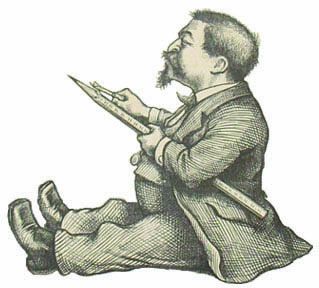
Thomas Nast was a famous German-American caricaturist and editorial cartoonist in the 19th century and is considered to be the father of American political cartooning.
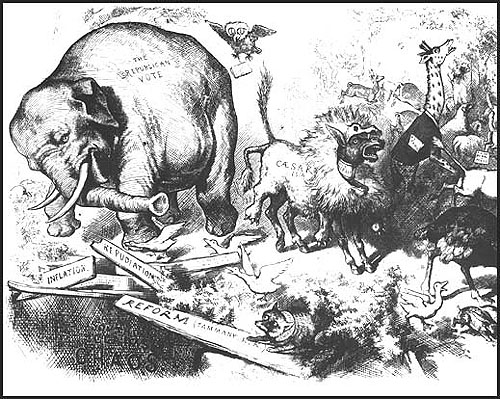
Thomas Nast was born in the barracks of Landau, Germany (in the Rhine Palatinate) and was the son of a musician in the 9th regiment Bavarian band. His mother took him to New York in 1846, where he studied art for about a year with Alfred Fredericks and Theodore Kaufmann and also at the school of the National Academy of Design. In 1855, at the age of 15, Nast started working as a draftsman for Frank Leslie’s Illustrated Newspaper after school; Three years later, he would begin working for Harper’s Weekly.
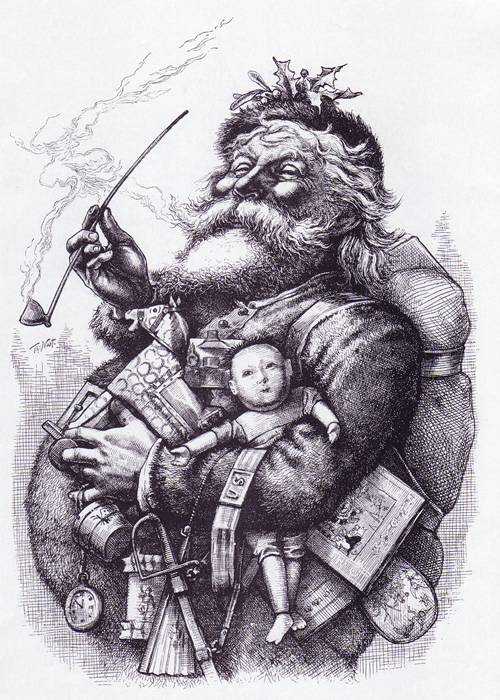
Nast drew for Harper’s Weekly from 1859 to 1860 and from 1862 until 1886. In 1860, he went to England for the New York Illustrated News to depict the prize fight between Heenan and Sayers and then joined Garibaldi in Italy as artist for The Illustrated London News. Nast’s cartoons and articles about the Garibaldi military campaign to unify Italy captured the popular imagination in the U.S. In the early 1860s, he married Sarah Edwards.
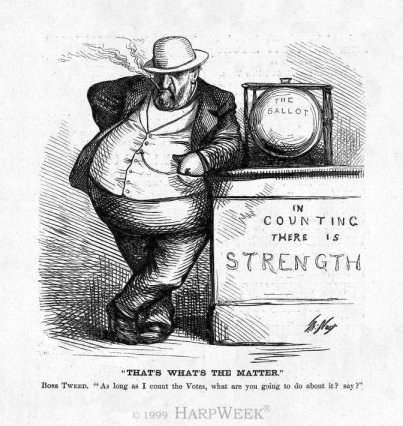
His first serious work in caricature was the cartoon Peace, which was made in 1862 and was directed against those in the North who opposed the prosecution of the American Civil War. This and his other cartoons during the Civil War and Reconstruction days were published in Harper’s Weekly. He was known for drawing battlefields in border and southern states. These drawings attracted great attention, and Nast was called by President Abraham Lincoln “our best recruiting sergeant”.

Even more able were Nast’s cartoons against the Tweed Ring conspiracy in New York City. His biting wit was generally focused on political corruption and was instrumental in the downfall of Boss Tweed. It was said his caricature of Boss Tweed was used by the officials of Vigo, Spain, and they were able to arrest Tweed using one of Nast’s cartoons when he fled to Vigo. In general, he was well-known in his time for his political cartoons supporting American Indians, Chinese Americans, and advocating the abolition of slavery.

Nast believed that the well-organized Irish immigrant communities in New York had provided the basis for Tweed’s popular support. Because of this, along with Nast’s Anti-Catholic and Nativist beliefs, Nast often portrayed the Irish immigrant community and Catholic Church leaders in an unflattering light. In 1875, in one of his works titled The American River Ganges, Nast.
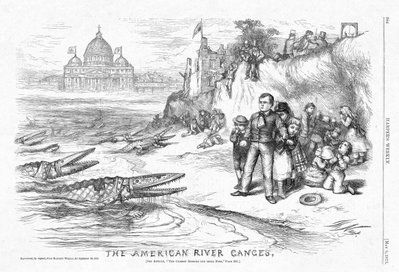
His cartoons frequently had numerous sidebars and panels with intricate subplots to the main cartoon. A Sunday feature could provide hours of entertainment and highlight social causes. His signature “Tammany Tiger” has been emulated by numerous cartoonists over the years.
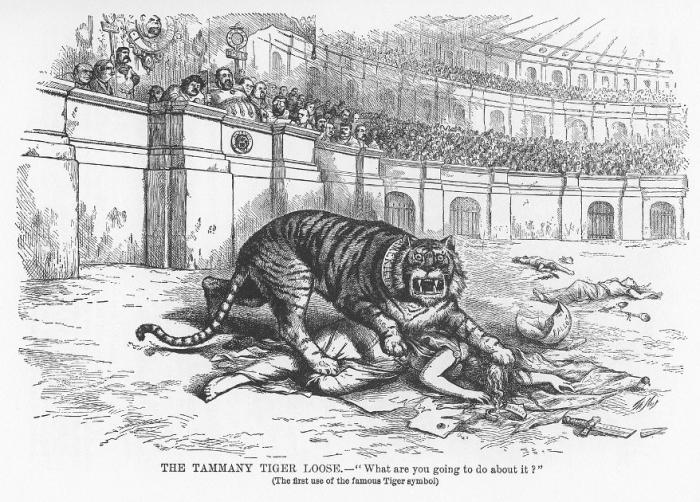
Nast became a close friend of President Grant, and the two families shared regular dinners until Grant’s death. Nast encouraged the former president’s efforts in writing his autobiography while battling cancer. He did some painting in oil and some book illustrations, but these were comparatively unimportant, and his fame rests on his caricatures and political cartoons. Nast also introduced into American cartoons the practice of modernizing scenes from Shakespeare for political purposes.
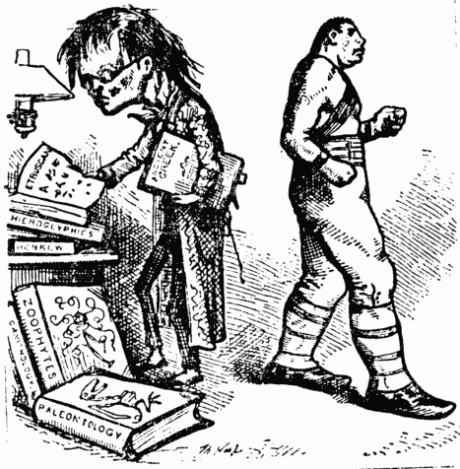
In 1873, 1885, and 1887, Nast toured the United States as lecturer and sketch artist, but with the advent of new methods and younger blood, his vogue decreased. After the death of Fletcher Harper, he focused on oil paintings and book illustrations. He shared political views with his friend Mark Twain and was for many years a staunch Republican. Nast strongly opposed President Andrew Johnson and his Reconstruction policy, ridiculed Horace Greeley’s candidacy, and opposed inflation of the currency notably with his famous rag-baby cartoons. His advocacy of civil service reform and his distrust of James G. Blaine forced him to become a Mugwump, but in 1892, he returned to the Republicans in support of Benjamin Harrison.
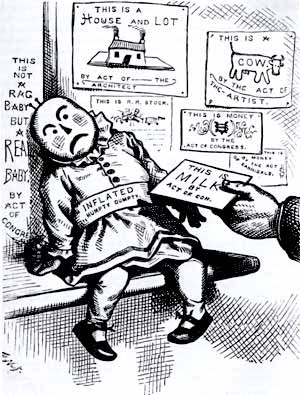
Nast moved to Morristown, New Jersey in 1872 and lived there for many years. In 1890, he published Thomas Nast’s Christmas Drawings for the Human Race. Nast tried to start a magazine, which failed, and in 1902, Theodore Roosevelt appointed him as the United States’ Consul General to Guayaquil, Ecuador in South America. During a deadly yellow fever outbreak, Nast heroically stayed to the end helping numerous diplomatic missions and businesses close to escape the contagion. In 1902, at the age of 62, he died of yellow fever that he contracted there. His body was returned to the United States where he was interred in the Woodlawn Cemetery in The Bronx, New York.
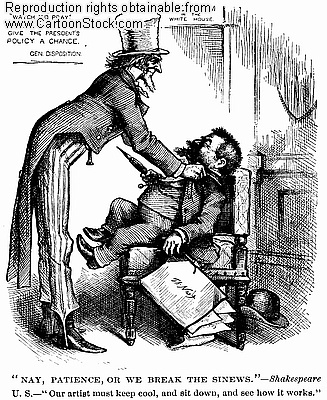
Still wondering about a German illustration in your family collection? Contact us… we are the Thomas Nast experts.
